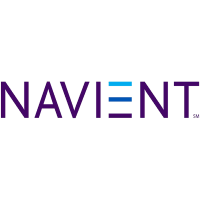
Navient Corp
NASDAQ:NAVI
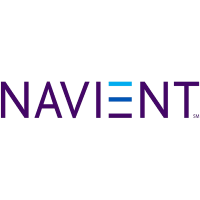

| US |

|
Johnson & Johnson
NYSE:JNJ
|
Pharmaceuticals
|
| US |

|
Estee Lauder Companies Inc
NYSE:EL
|
Consumer products
|
| US |

|
Exxon Mobil Corp
NYSE:XOM
|
Energy
|
| US |
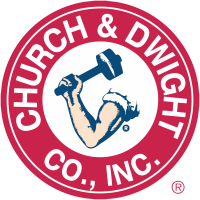
|
Church & Dwight Co Inc
NYSE:CHD
|
Consumer products
|
| US |

|
Pfizer Inc
NYSE:PFE
|
Pharmaceuticals
|
| US |

|
American Express Co
NYSE:AXP
|
Financial Services
|
| US |

|
Nike Inc
NYSE:NKE
|
Textiles, Apparel & Luxury Goods
|
| US |

|
Visa Inc
NYSE:V
|
Technology
|
| CN |

|
Alibaba Group Holding Ltd
NYSE:BABA
|
Retail
|
| US |

|
3M Co
NYSE:MMM
|
Industrial Conglomerates
|
| US |

|
JPMorgan Chase & Co
NYSE:JPM
|
Banking
|
| US |

|
Coca-Cola Co
NYSE:KO
|
Beverages
|
| US |

|
Target Corp
NYSE:TGT
|
Retail
|
| US |

|
Walt Disney Co
NYSE:DIS
|
Media
|
| US |

|
Mueller Industries Inc
NYSE:MLI
|
Machinery
|
| US |

|
PayPal Holdings Inc
NASDAQ:PYPL
|
Technology
|
Utilize notes to systematically review your investment decisions. By reflecting on past outcomes, you can discern effective strategies and identify those that underperformed. This continuous feedback loop enables you to adapt and refine your approach, optimizing for future success.
Each note serves as a learning point, offering insights into your decision-making processes. Over time, you'll accumulate a personalized database of knowledge, enhancing your ability to make informed decisions quickly and effectively.
With a comprehensive record of your investment history at your fingertips, you can compare current opportunities against past experiences. This not only bolsters your confidence but also ensures that each decision is grounded in a well-documented rationale.
Do you really want to delete this note?
This action cannot be undone.

| 52 Week Range |
13.99
19.57
|
| Price Target |
|
We'll email you a reminder when the closing price reaches USD.
Choose the stock you wish to monitor with a price alert.

|
Johnson & Johnson
NYSE:JNJ
|
US |

|
Estee Lauder Companies Inc
NYSE:EL
|
US |

|
Exxon Mobil Corp
NYSE:XOM
|
US |

|
Church & Dwight Co Inc
NYSE:CHD
|
US |

|
Pfizer Inc
NYSE:PFE
|
US |

|
American Express Co
NYSE:AXP
|
US |

|
Nike Inc
NYSE:NKE
|
US |

|
Visa Inc
NYSE:V
|
US |

|
Alibaba Group Holding Ltd
NYSE:BABA
|
CN |

|
3M Co
NYSE:MMM
|
US |

|
JPMorgan Chase & Co
NYSE:JPM
|
US |

|
Coca-Cola Co
NYSE:KO
|
US |

|
Target Corp
NYSE:TGT
|
US |

|
Walt Disney Co
NYSE:DIS
|
US |

|
Mueller Industries Inc
NYSE:MLI
|
US |

|
PayPal Holdings Inc
NASDAQ:PYPL
|
US |
This alert will be permanently deleted.
 Navient Corp
Navient Corp


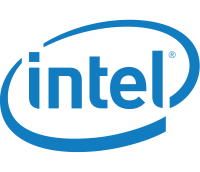
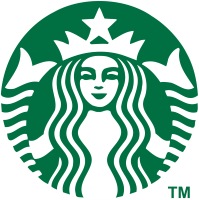


 You don't have any saved screeners yet
You don't have any saved screeners yet

Thank you for standing by and welcome to Navient’s Third Quarter 2020 Earnings Call. All lines have been placed on mute to prevent any background noise. After the speakers' remarks, there will be a question-and-answer session. [Operator Instructions]. Thank you.
Mr. Nathan Rutledge, you may begin.
Thank you, Andrea. Good morning and welcome to Navient's third quarter 2020 earnings call. With me today are Jack Remondi, our CEO; and Joe Fisher, our CFO. After their prepared remarks, we will open up the call for questions.
Before we begin, keep in mind, our discussion will contain predictions, expectations, forward-looking statements and information about our business that is based on management's current expectations as of the date of this presentation. Actual results in the future may be materially different from those discussed here. This could be due to a variety of factors. Listeners should refer to the discussion of those factors on the company's Form 10-K and other filings with the SEC.
For Navient, these factors include, but are not limited to, the risks and uncertainties associated with the severity, magnitude, and duration of the COVID-19 pandemic and the related economic impact. As reported previously, the work from home policies and travel restrictions that have been put in place have not negatively affected our ability to close our books and maintain our financial reporting systems, internal controls over financial reporting or disclosure controls and procedures.
During this conference call, we will refer to non-GAAP financial measures including core earnings, adjusted tangible equity ratio, and various other non-GAAP financial measures derived from core earnings. A description of our non-GAAP financial measures and a full reconciliation to GAAP measures, and our GAAP results can be found in the third quarter 2020 supplemental earnings disclosure. This is posted on the Investors page at navient.com.
Thank you. And I'll turn the call over to Jack.
Thank you, Nathan. Good morning, everybody. Thank you for joining us today and for your interest in Navient. Before I begin my comments on the quarter, I'd like to welcome Joe Fisher to his first earnings call as CFO. Joe brings a wealth of knowledge of our business and an outstanding commitment to help us to deliver value. And to those of you who have worked with Joe in his role in Investor Relations, you know this already. I'm excited to see Joe take on this important and challenging role. And I look forward to working with him even more closely. And I'm confident in his ability to succeed. Congratulations, Joe. I also want to acknowledge and thank Ted Morris, our Controller, who bridged the gap as Acting CFO. This was no small task and he did it while maintaining his responsibilities as Controller. Thanks Ted for stepping up and for helping out.
While the pandemic continues to create significant challenges, our business model continues to deliver outstanding results. Once again, this quarter's results demonstrate the resiliency, adaptability and commitment of our team and our business model as we continue to meet the needs of customers and clients. Throughout this pandemic, we have helped millions of borrowers address their individual economic challenges with payment relief and other things. We've also deployed thousands of our teammates to help residents apply for and receive unemployment benefits, and assist communities in COVID contact tracing. In doing so, we kept our team safe and employed and even added thousands to our payroll. I'm extremely proud of how our team continues to perform in this challenging environment and in their commitment.
Our results this quarter were outstanding, and they exceeded our plan. For the quarter, adjusted core earnings per share rose a substantial 58% over the year ago quarter to $1.03, and we delivered a core earnings return on equity of 33% in the quarter. The quarter's results were driven by continued strong credit performance, increasing demand for our credit products, a favorable interest rate environment, significant demand for business processing solutions, and our active focus on improving operating efficiency. In other words, every area of the business contributed to our strong results.
While Joe will provide more details on the quarter shortly, I will start with some of the highlights. Net interest income continued to benefit from a favorable interest rate environment and improving funding spreads. The increase in refi originations also contributed to the $12 million increase in net interest income over the year ago quarter. And despite the floor reset on July 1st that eliminated $30 million in floor income this quarter, net interest income fell by only $8 million compared to the second quarter. Given the current rate environment and funding execution, we expect our full year net interest margin for both FFELP and private loans to be greater than the original guidance provided at the beginning of the year.
With the onset of the pandemic, we provided significant payment relief to millions of borrowers. As the economic situation began to recover, requests for forbearances fell and the majority of borrowers successfully returned to repayment. For example, forbearance rates decreased from a peak of 28.5% in our FFELP portfolio to 14.3% at quarter end, and from a peak of 14.7% in our private loan portfolio to 4% at quarter end. In both portfolios, forbearance rates are consistent with pre-COVID levels.
The initial usage of forbearance did reduce delinquencies and defaults in both our FFELP and private portfolios year-to-date. As borrowers returned to repayment, private loan delinquency rates have remained very low, and our substantial loan loss reserves provide the ability to absorb significant losses if necessary. While we expect delinquencies and defaults to increase next year, our substantial reserves are set for this and are adequate to cover expected losses.
In our Consumer Lending segment, we saw strong demand for our refi loan products, as we relaunched marketing in the quarter. Refi originations this quarter totaled 1.3 billion with attractive spreads and very strong credit characteristics and in line with our mid-teen ROE targets. The demand for loans to fund in-school programs was higher than last year, but lower than planned, as fewer students were enrolled and many schools operated in a virtual environment. This, along with conservative underwriting, kept new loan originations at the low end of our plan. Including second disbursements, commitments in the academic year totaled $60 million, with $37 million disbursed through the second -- through the third quarter.
Our BPS segment saw record revenue and EBITDA in the quarter with an EBITDA margin of 25%. Revenue was driven by the continued but slow recovery of business and healthcare and transportation and in our ability to assist states to provide much needed services to their residents. This strong performance of this segment is expected to continue through year-end. Our efforts to improve our operating efficiency also contributed to our strong results. Even as we hired 2,000 teammates to meet growing demand, total operating expense fell $20 million and our core operating efficiency ratio improved 8% to 45% in the quarter. Operating efficiency remains a top priority for us.
At the same time, we're continuing our work to improve customer experience and leveraging new technology. For example, we've launched an AI-powered online assistant and are creating video channels to make it easier for constituents to do business with our government clients. Finally, we continue to strengthen our capital ratios, while returning $96 million to shareholders in the quarter, including the repurchase this quarter of 4% of our outstanding shares. Given our earnings outlook and strong capital position, we will continue to return excess capital to shareholders.
Every area of our business contributed to this quarter's outstanding results. It is a clear demonstration of the strength of our business model, the strong credit profile of our loan portfolio, and our ability to originate high-quality attractive loans. It also reflects our ability to leverage our business processing skills to assist our clients and win new business and our ability to deliver increasing operating efficiency in a very challenging environment.
Our earnings along with the capital released from our amortizing legacy loan portfolios also provide substantial resources to support the business, maintain our dividend and return surplus capital to investors. And all this while maintaining a position of substantial financial and operational strength. We expect this strong performance to continue supporting another increase in our core earnings forecast to between $3.25 and $3.28 for the full year.
I also would like to acknowledge my teammates, and their commitment to our customers and clients. Adjusting to new work arrangements and new services, while juggling the uncertain environment and increasing family needs has not been easy. Thank you.
I appreciate your interest in listening in today and I look forward to your questions later in the call. I'm very pleased now to turn the call over to our new CFO, Joe, for a summary of this quarter's results. Joe?
Thank you, Jack, and thank you to everyone on today's call for your interest in Navient. During my prepared remarks, I will review the third quarter results for 2020 and provide additional color on the impact of the COVID-19 pandemic on our business. I will be referencing the earnings call presentation which can be found on the company's website in the Investors section.
Starting on Slide 5, key highlights from the quarter, we delivered GAAP EPS of $1.07 and adjusted core EPS of $1.03, provided continued immediate payment relief options to borrowers impacted by COVID-19, originated $1.3 billion of private refi loans, achieved record BPS EBITDA margins of 25%, reduced operating expenses by 8% and improved our efficiency ratio to 45%, maintained our strong liquidity position and capital position, repurchased $65 million of common shares, and increased our adjusted tangible equity ratio to 4.1% or 6.4% after excluding the cumulative negative mark-to-market losses related to derivative accounting.
Let’s move to segment reporting, beginning with Federal Education Loans on Slide 6. On both our FFELP and private portfolio, we continue to grant disaster related forbearance to those in need. As borrowers begin to transition back towards payment, we've seen a decline from the peak forbearance usage rates of 28.5% that occurred during the second quarter, down to 14.3% at the end of the third quarter. While the portfolio continues to amortize, the net interest margin improved 21 basis points from the prior year, which led to overall net interest income increasing 12% to $161 million in the quarter. The increase from the year ago quarter was largely driven by the favorable interest rate environment we are experiencing. This resulted in a significant increase in unhedged floor income compared to the prior year. In the quarter, unhedged floor income contributed 18 basis points to the segment's net interest margin of 103 basis points.
The current outlook for interest rates should continue to positively impact the net interest margin on our FFELP portfolio. And as a result, we are raising our full year net interest margin expectations to be in the mid to high 90 basis point range. The higher net interest margin along with lower operating expenses contributed to a $9 million increase in net income from the prior year.
Now let's turn to Slide 7 and our Consumer Lending segment. Forbearance usage peaked at 14.7% or $3.4 billion during the second quarter, and has declined to 4.0% or $867 million at quarter end. On the following page, you can see the trajectory of forbearance usage of borrowers that have successfully exited forbearance, and have not requested any additional payment relief options available to them.
Our delinquency rate declined 50% to 2.4%, and the charge-off rate fell by 53% to 75 basis points. The early trends we're seeing as borrowers exit forbearance are encouraging. For example, 98% of our refinance education loan customers that have exited forbearance have made a payment. As borrowers continue to transition out of forbearance, we expect both charge-offs and delinquencies will increase from these historic lows beginning in the fourth quarter.
Based on the performance we have seen to-date, and absent a significant deterioration in the economy from this point, we feel confident that we are adequately reserved given the well-seasoned and high credit quality of our portfolio. The provision of $10 million in the quarter primarily related to $1.3 billion of newly originated education loans in the quarter. The average FICO associated with these loans is 764.
Net interest income of $189 million was driven by the stability in our net interest margin, combined with an increase of our Private Education Refinance Loan balance, offsetting the natural amortization of our legacy portfolio. The net interest margin of 324 basis points was better than expectations, largely due to a lower interest reserve related to a decline in late-stage delinquencies and lower loan modifications.
Our updated full year net interest margin guidance of 315 basis points to 320 basis points assumes an interest reserve build related to increased late-stage delinquencies and loan modifications. In addition, operating expenses declined by 16% year-over-year, while growing our average balances and increasing net income to $110 million.
Continue to Slide 9 to review our Business Processing segment. In the third quarter, we saw the results of our ability to leverage our existing technology and infrastructure in order to respond rapidly to support states in providing unemployment benefits and contact tracing services. These new opportunities contributed to a 36% increase in total revenue from the prior year and record EBITDA margins of 25%.
Turn to Slide 10, which highlights our financing activity. During the third quarter, we issued $1.6 billion of term private education refi ABS. We continue to see attractive demand for our high-quality assets as we have securitized $4.8 billion year-to-date of private education loans and $1.5 billion of FFELP loans.
On October 14th, we priced our second FFELP deal of the year. The investor book was oversubscribed by nearly 2.6 times. This allowed us to take in pricing that was 15 basis points tighter than our last FFELP ABS transaction. At quarter end, we had additional capacity in our funding facilities of $2.2 billion for private education loans and $122 million for FFELP loans to go along with $2.5 billion of primary liquidity, of which $1.8 billion is cash. As a result, we ended the quarter in a very strong liquidity position.
In the quarter, we acquired 7.7 million shares or 4% of the shares outstanding for an average price of $8.42. We ended the quarter with an adjusted tangible equity ratio of 4.1%. The cumulative negative mark-to-market losses related to derivative accounting declined by 5% to $657 million in the quarter and in line with expectations. Excluding these temporary mark-to-market losses that will reverse to zero as contracts mature, our adjusted tangible equity ratio is 6.4%.
Turning to GAAP results on Slide 11. We recorded third quarter GAAP net income of $207 million or $1.07 per share compared with net income of $145 million or $0.63 per share in the third quarter of 2019.
In summary, the strong results this quarter benefited from a favorable interest rate environment and our ability to leverage our existing infrastructure to win new BPS contracts. Assuming that credit performance remains consistent with the early results, we feel confident that we can exceed our original core EPS guidance range of $3 to $3.10 per share and deliver core EPS between $3.25 and $3.28 per share.
Before I turn the call over to questions, I would like to express my appreciation to Ted, the entire finance team and all of team Navient for supporting me in my new role and their hard work and effort in these unprecedented times.
In a year that has presented many unique challenges, I'm extremely proud of how we have responded to our customers and clients with innovative solutions to help them navigate the current environment.
I will now turn the call over to questions.
[Operator Instructions] Your first question comes from the line of Mark DeVries of Barclays.
Let me be the first to congratulate you, Joe, again, on your new role. Can you -- and thanks for the guidance on the NIM for the rest of the year. But can you talk a little bit more about kind of the drivers of that strength? And how we should think about that into 2021?
So there are a couple of -- in the federal portfolio, we are continuing to benefit from the favorable interest rate environment. And although, the annual reset floor income declined, our fixed rate floor income continues to be a material contributor to our spread. As Joe indicated as well, our -- the funding side of the equation or cost of funds on new transactions has been met with very strong investor demand, and that's allowed us to execute at tighter spreads than our original plans had anticipated.
On the private side of the equation, we're benefiting as well from the favorable spread between prime and LIBOR. And a unique aspect of CECL accounting, which as loans -- as there are fewer loans delinquent, we are required to set aside less coverage for the accrued interest -- accrued and unpaid interest on those delinquent accounts, and that's also a contributor to that.
And then lastly, on the private side, we're getting a benefit as well as we're seeing fewer borrowers needing interest rate relief through our loan modification programs.
Got it. And then the BPS revenue has also been quite strong, I think you highlighted. Can you just unpack the different pieces there and give us some color on what's more permanent and what's more temporary, so we get a better sense of kind of what the run rate could be going forward?
Right. So a significant amount of the work that we have been doing in the third quarter and continuing into the fourth is related to, what I would call, project or contract work with states. Ideally, we're not doing that work long-term because there'll be less demand for unemployment insurance and COVID contact tracing. Right now, those contracts tend to roll in monthly or quarterly aspects. So we're anticipating the majority of that revenue to roll off in the -- or end in the fourth quarter and not continue into next year. That can change depending upon the demand at each of the individual states. But as it stands right now, that's what we're anticipating. At the same time, we're seeing -- we're beginning to see a return of transactional activities and our other clients, particularly in healthcare and transportation. And so that is something that -- as those businesses begin to pick up and the economic recovery becomes more stable, we should see those businesses return to normal as well.
Your next question comes from the line of Moshe Orenbuch of Credit Suisse.
Great. And Joe, congratulations, and thanks for taking our questions. The first -- the question I had basically was about capital. You made good progress, but you kind of went and started repurchasing stock again. Could you talk a little bit about -- I mean, that's better than what you had said 3 months ago. So maybe give us a little bit of background as to what you're now thinking in terms of the equity ratios that you're targeting? And what that means for buyback over the -- in the future?
Sure. So Moshe, I think when we think about the remainder of this year and beyond, obviously, we've given our guidance for adjusted tangible equity ratios of that 4.5% to 5%. And the way we think about it for the remainder of the year, in terms of share buybacks and other capital returns is, we're looking to meet those hurdles in terms of what we have set out for the rating agencies and our debt investors. So to the extent that we return any additional capital in the form of share repurchases this year, it's really going to come down to any excess capital levels we have above and beyond what our targeted ratios are.
And as we enter into 2021, I think we're in a much stronger position in terms of as we build those ratios, specifically to the rating agencies, where you're going to be seeing more normalized levels of what we have done. Obviously, we'll look to be opportunistic when we can. But I would say that, I would think of it as more of an even pace where if there's opportunities at hand, we will take advantage of those.
Got you. And maybe as a follow-up, somewhat related, looking -- you're continuing to -- not huge changes, but continuing to kind of move your debt stack kind of lower and more even. Could you talk about any opportunities that you see? Are there opportunities in the current environment to kind of do anything that would allow you to take any steps to optimize the right-hand side of the balance sheet?
So I would -- I mean, that's -- it's a difficult process there, in part because I think the demand for our outstanding unsecured debt has been particularly strong. And the opportunity for us to kind of enter into the marketplace and repurchase that periodically to change the mix structure isn't as easy as one would hope. But I think what we've done over the last couple of years has been pretty significant in terms of restructuring that side of the balance sheet, taking advantage of not just traditional ABS financing vehicles, but really leveraging the equity that has been building up in some of those securitization trusts and borrowing against those at rates that are 300 basis points, 350 basis points cheaper than unsecured funding costs, which would have been the traditional alternative. And as a result of that, we've been able to bring our unsecured debt balances down through maturities principally, but bring them down faster than otherwise would have been expected.
We have a significant amount of debt maturing, we have coming up this quarter and then into 2021. So that will give us some opportunity. But I would have hoped we would have been able to find more of that debt available in open market transactions than we have.
Got you. And then just last 1 for me. The efficiency ratio you showed here in the slides, that 47% year-to-date, your guidance about 50%. What's the driver? Why you don't think that's going to be sustained at that level? Is it what you were talking about with business process servicing revenues? What's the plan, I guess, on expenses? And how should we think about that?
We remain absolutely focused in terms of hitting the targets that we put out, especially on the operating efficiency ratios. And from that standpoint, obviously, as you touched on the BPS segment, that is a margin business that we're focused on hitting in the mid to high teens. So a little down from this quarter, but certainly, within our targeted range. So we feel confident that we're on a pace to achieve or exceed that target, or I should say, from a positive, obviously, be on the better end of that 50% target ratio. But as we go forward, I think you have to look at us and look across other companies. I mean, this efficiency ratio compares very well against our competitors, and that's something that we focus on and looking to maintain those levels, not exceed them as the portfolio amortizes over time.
Your next question comes from the line of Arren Cyganovich of Citi.
Congrats, Joe. And good luck in the new role. The drop in the Pell that's forecasted, I guess, for the fourth quarter based on your guidance. You mentioned the interest reserve build. I assume that that's what's driving the Pell NIM to come down there. The other comment about CECL driving this benefit because of the low delinquencies. Are you expecting delinquencies to rise in 2021? Is this going to be a bit of a headwind into next year?
Yes. So there's no question that when we granted pretty wide use of disaster forbearance, many customers who were delinquent and might have defaulted in 2020 went into a forbearance status. And ultimately, those delinquencies and defaults get pushed into 2021. So when we look at the loss rates, the charge-off rates in our private loan portfolio this year, they're substantially below what we had expected at the beginning of the year. Those losses, in our view, don't disappear. They just -- they're more moving from calendar year '20 to calendar year 2021. And as those delinquencies build, that's where the provision for the accrued interest expense would come in. That said, as customers are coming out of forbearance and entering repayment, the performance of those loans is better than what we would have expected. And so we'll be watching those trends. And we spend -- I think, one of the hallmarks and real attributes of our servicing operation is that how we use data in different strategies to connect with borrowers and help them find a payment plan that keeps them on track and successfully helps them amortize their loan balances. And you can see that even in our TDR portfolio statistics, where the amortization of that portfolio has been quite good over the last year, which is something we strive for.
And Arren, just on the reserve as well. As Ted mentioned on the last call, the standard practice for most financial institutions is a policy that reserves for the 90-day interest through net interest margin. So it's not all delinquencies. It's really -- as loans come out of forbearance, there's going to be some build as they move through 30-day, 60-day buckets into your 90-days where you would have that build occur. And as you saw from prior quarter, our 90-day delinquency actually declined. But if you look at the dollar amount in the 30-days and 60-days, you can see how that build can occur from this quarter to next quarter on the 90-day delinquency bucket.
Just so I can try to get my head around the magnitude. What are we thinking in terms of the magnitude of the headwind into 2021?
I think if you think about the guidance that we gave for ‘20 -- the remainder of 2020, that 3.15 to 3.20, just backing out the math of what that would mean for an impact just from this alone for the fourth quarter. If you're at delinquency levels that are closer to historic levels, you could see as much as, I’d call it, 20 basis point to 30 basis point impact, depending on the level of delinquencies that hit 90. So if you're assuming essentially 100% of what's in 30-days to 60-days rolls through into 90, you could see that much of an impact on the high end.
Okay. Got it. And then just -- I don't know if you can comment much on this, but it does appear we're headed towards a potential democratic sweep in the election. What do you think that's going to mean for NAVI over the next 4 years?
Well, I think there's been -- I think student debt has received a wide range of kind of commentary during this whole primary and less than the general election side of the equation. But there has been a growing focus on segments of the population that are struggling with student loan debt. And this is particularly true in the federal loan side of the equation, and we would agree with that. We see a number of -- the biggest challenges happening, not so much with borrowers with high debt balances but borrowers who have relatively modest debt balances, $10,000 and less, who acquired that debt by starting school but not finishing. And as I've shared with you all before, two-thirds of all the defaults in the federal loan programs come from students who borrow less than $10,000.
So we think there are some ways that the federal government should step in and provide some relief here. And more importantly, because providing relief and then not doing anything about repeating itself only means you're going to have to do it again down the road, really helping students and families better -- have a better understanding of what their financial plans need to be as they start school. What the consequences are of borrowing for that degree, making sure they earn it and making sure that, that debt balance is matched to the economic prospects that, that degree presents. And I think we've had a number of very good conversations over the last 2 years with policymakers on those fronts to help to share the insights that we have from the frontlines of where the challenges are and make sure that relief programs are targeted to those most in need.
Your next question comes from the line of Vincent Caintic of Stephens.
Joe, congratulations on a well-deserved promotion. So first, a question on just the student loan trends and the originations. So understanding third quarter kind of hit the low end of the range as you updated your guidance. Any update to how October has been performing so far, and how you expect this to trend just because it seems like this time this year is somewhat different with the hybrid and maybe people coming on later?
So we haven't -- so this is on the in-school side of the equation. The demand for credit in that product set is very seasonal. You tend to see the applications being submitted in the July-August timeframe with school certifications and disbursements happening in September and then again, December, January.
Just as we have in prior years, we're definitely seeing lower application volume at this time of the year because it's -- the kids are already enrolled and tuitions have been paid. I think we -- it is possible that you could see higher demand in the -- for the second semester. But as we stand here at the end of October, schools really have yet to release their plans for how they're going to operate in January. And so until those plans become finalized, I don't think we're going to see any changes until students and families have more visibility about what's going to happen next semester.
Okay. That makes sense and helpful. Second question, kind of a follow-up on the yield discussion. So good NIM guidance and understanding that there's some -- there's also some reserve build in there. But when we think about -- thinking of the 2021, benchmark rates are as low as they can go. We already had the annual reset. Is there anything else that could change the yield? And then when I think about NIM, kind of a continued benefit from the cost of funds improvements, but anything else that you would call out there?
I think as Jack mentioned earlier on the call, we're in a beneficial interest rate environment. And that what we're seeing on the FFELP portfolio should continue as interest rates remain low. And the other item I would just highlight that we have in the past on the private NIM is really just a mix shift as we originate more refinance loans at a lower rate than what we have on our legacy book, that will also -- would cause additional pressure. But obviously, those are very high quality loans, and we're targeting mid-teens ROEs.
Our next question comes from the line of Mark Giambrone of Barrow, Hanley.
Joe, congratulations. Great quarter, great progress on things you can control and improve the earnings power over time. I'm just curious, Wells Fargo announced they're coming out of the business. And I just wonder what you guys think that means generally. And then there is a large portfolio potentially sitting out there. And if you would find that attractive, or think there might be a chance that you could acquire that over time?
Thanks, Mark. So I do think one of the things that we have believed as CECL became the accounting rules for provisioning of consumer loans is that funding in-school loans on a bank balance sheet was going to become increasingly more difficult. And I think the move here from Wells is -- certainly could be part of that. They have their other reasons that they may be taking into consideration. But long-term, we do see that as something that would be a positive in terms of demand for our in-school loan products simply because they were a large and formidable player in that space. And while they continue to originate this academic year, so we would expect the origination benefit to us to come in the future. And like any opportunity -- any time of portfolio of loans that is available in the marketplace, we're always eager to find ways to participate in that and as best we can through a combination of servicing, loan ownership, et cetera. So we'll be looking at those opportunities should they present themselves.
Your next question comes from the line of Sanjay Sakhrani of KBW.
Congrats, Joe, well deserved. I guess I just wanted to go back on the NIM expectations as we move into next year. Just want to make sure I completely get it. For the FFELP NIM, it sounds like you guys could probably sustain the 90s, the mid-90 levels, all else equal? And then on the private student loan NIM is the expectation that you drop about 20 basis points to 30 basis points, all else equal? And if rates stay the same, that's sort of where we level out next year? I just want to make sure I get that.
Yes. So I mean, if you look at our original guidance at the beginning of the year, right, we had been forecasting 300 basis points to 310 basis points. And so as we get -- as we end this year, I think what you'll see is that on the low end of that range as we add more loans and we think into next year that, that's an appropriate way to think about it in that 300 basis points or south of that number just based on the mix shift.
And FFELP?
Yes. So I think your statements on FFELP were accurate. I mean the current interest rate environment and what we're seeing the stability of that portfolio and the predictability, absent any, obviously, significant changes in the interest rate environment, that's where we feel comfortable of what we're seeing really today in our guidance into the fourth quarter and beyond for 2021.
Sanjay, I would just add, the -- there certainly have been some very positive headwinds in 2020 more on the FFELP side of the equation than on the private side, principally due to the floor income benefits we received on the annual reset loans. But we still look at -- as we get closer to wrapping up the fourth quarter here, and we'll provide guidance for what we think in 2021 back in January, we're very optimistic about where -- how earnings and how the company will continue to perform next year. So I wouldn't -- while this interest reserve on the private side of the equation is certainly something that is a headwind, it is not a material headwind and shouldn't materially change our earnings outlook here.
Okay. Great. And then just a follow-up to Mark's question on the Wells Fargo opportunity. Just thinking about this enrollment period, do you guys think it can have an impact on your pace of originations this specific year, given there's a big player that's exited? And then just maybe a follow-up on the regulatory side. There was a lawsuit in New Jersey. Obviously, the CFPB lawsuit still remains out there. Could you just comment on sort of where we are with all of this? And if this New Jersey lawsuit poses any threat or is it sort of just to follow-on to similar lawsuits in other states?
Yes. So on the in-school side of the equation, I think the impact of a major player like Wells not originating loans is a ‘20 -- an academic year 2021-2022 benefit for us. This year, demand for lending in both federal and private was down in part because many students' enrollments across the country were down fairly significantly and you also had a high percentage of students completing classes virtually, which means they're not on campus, they're not in dorms. And there was a story yesterday, I think, on Bloomberg or somewhere I read on how schools are suffering because no one is paying for room and board kinds of things. So hopefully as -- hopefully, COVID will be behind us for the next academic year, and we'll have a more normalized lending cycle. And we -- I will say, we've continued to receive very strong and favorable reviews from customers as they utilize our loan origination systems just in terms of the ease and the logical flows that take place. And so a very, very positive customer experience overall.
On the regulatory side of the equation. Yes, New Jersey filed a lawsuit yesterday. It is a copycat of what has been filed by the CPB and other states over the years. There's nothing new here, no new evidence, no new allegations. It's obviously extremely unfortunate that there was a decision made to file a lawsuit without any facts or circumstances to support it. But we have consistently said that we will be defending these lawsuits because they are not supported by the facts and circumstances. I think everyone has had the opportunity to see the actual evidence that has been submitted by the CPB in their lawsuit. They came up with 15 witnesses who supposedly we steered into forbearance, all 15 of them acknowledged in depositions that Navient did, in fact, tell them about their repayment options, including income-driven repayment options. A number of them were actually enrolled in income-driven repayment plans. So I don't know how they could have been steered into something else if they're already in it. Several were committing fraud against the federal government. So we are very confident in terms of our outlook on these, and it's -- I would dare say these are nothing more than political statements in these lawsuits that have been filed in many cases.
[Operator Instructions] Your next question comes from the line of Mark Hammond of Bank of America.
Congrats to Joe and Nathan. On the adjustable tangible equity ratio, the target of 4.5% to 5%, is that with or without the impact of cumulative derivative account mark-to-market?
So that includes the impact. So excluding that of where we are today, we're at 6.4%. And in this quarter, you saw the mark declined by 5%. So that gives you a sense that we were in line with our expectations. So it gives you a sense of how to back that out going forward.
Got it. And then on the cash flow slide, Slide 13, for the FFELP side of the portfolio. I noticed that since the second quarter to the third quarter, really, that number didn't change as far as your expectations. So I was wondering if there are any assumptions changed in the -- or expectations changed for cash flow to be generated by the FFELP portfolio quarter-over-quarter for the rest of the portfolio's life? Or just trying to understand what's going on there?
Sure. So as we do every quarter, we obviously update with the forward yield curve. So that's something that we take into account as of 9/30. We also -- and typically in the third quarter, as we've done in other quarters, but mainly in the third quarter, we adjust our CPR assumptions. So our CPR speeds did increase from the prior quarter and prior year. So essentially, what we saw was that the FFELP Stafford portfolio went from 4 -- sorry, consolidation went from 4% to 5% and Stafford went from 8% to 9%. So those were really the big adjustments that we had occur in the quarter.
Thanks, Joe. And my last one, for the $500 million of high-yield unsecured notes that are maturing in 5 days, are you just going to use cash on hand to retire those? Or is there some other means of financing to refinance these notes?
No, we intend to use the cash on hand.
Your next question comes from the line of Rick Shane from JPMorgan.
Joe, congratulations. I wanted to talk about the Consumer Lending segment, the private student loan portfolio a little bit. When we think about it, we think about it in 3 segments. There's the legacy book, there's the new in-school book, and then there is the refi and consolidation book. And it looks like the activity this quarter was primarily in the -- on the refi side. What's interesting to me is the allowance -- the reserve rate on that is very low. As you guys pointed out, it's about 77 basis points. But it looks like the reserve rate for the entire portfolio actually stayed flat quarter-over-quarter. So did you change the assumptions on the legacy book or is there something going on with the in-school book that's going to keep that allowance ratio higher as you continue to drive business through the refi channel?
So the net provision that we made this quarter was primarily due to new loan volume, which, as you pointed out, is principally refi loans. Our loss expectations on that portfolio are a little over 1% over the life of the loans. And the net amount that you see there has to do with the amortization of the portfolio and some of the refinancing activities of existing loans that are included in the refi number. So some of the volume that we're generating is actually volume of borrowers who are refinancing existing loans with us.
Got it. Okay. That makes sense then. Okay. And over time, do you think that there will be additional granularity given the pretty different credit characteristics between in-school, private student lending and the refi business?
So we do look at each of these business, I think the portfolio segments and the 3 categories that you mentioned. And certainly, as these become larger components of the overall mix, we can certainly break some of those statistics out. There's no question the refi loan portfolio performs at a -- is a much, much higher quality, much, much lower risk portfolio than you would see in other lending activities. Just when in-school lending, your 2 risks are -- will the student graduate and will they get a job that produces an income level sufficient to manage their debt. In a refi loan, you don't have those risks. You know that the student has already graduated, and you've got anywhere between 4 to 5 years of earnings and income to be able to underwrite again. So as a result, you see significantly lower loss rates. And we can, certainly, going forward, look to break those out in a little bit more detail for folks, both in terms of spread, credit loss expectations and performance. You obviously can see a lot of this through the ABS financing transactions themselves, but we can certainly do more of that on the -- in the quarterly disclosures.
Yes, that would be terrific because, yes, there's clearly significant positive selection related to the refi portfolio. And so to be able to see that and understand it, especially as it grows, will be helpful.
Your next question comes from the line of Lee Cooperman of Omega Family Office.
I have a series of questions that lead me to an observation. The first question is, as you guys sit around and look at all these pushes and pulls, what do you think in normalized recurring earnings are? You talked about 3.25, 3.28 this year. Is that indicative of what you think are recurring earnings or your recurring earnings materially lower? But what do you think your recurring earnings are? I'll get to the real question after that one.
Yes. I mean, you're kind of looking for a little bit of guidance into 2021, but I...
Not really, I'm talking long-term. You obviously have a view because you've spent billions of dollars buying back stock. So you must have a view of value and the value derives some recurring normalized earnings. So I’m just curious what you would think?
I -- we would look at this as being able to -- obviously, you're fighting off the amortization of a large legacy loan portfolio that we could sustain earnings and that very high $2s, low $3 range…
Okay. That's what I figured you’d say. I went on a Bloomberg terminal, okay? And this is all off of Bloomberg, and their numbers are reasonably accurate. S&P 25 times earnings, Navient 3 times earnings, priced to book 3.6 times book S&P, Navient 88 times nominal book value, slight premium to tangible book value. Dividend yield, S&P 1.7, dividend yield Navient 6.5; ROE, S&P, 24%; ROE, Navient 25% you mentioned in the quarter, we did 35%. Okay. The stock price in my opinion is an embarrassment to the company. You have decided over the many years, we've -- I've been on these calls for now for a decade to return the money to the shareholders through stock repurchase, which I could appreciate it, it looks very cheap, but you haven't convinced anybody. The average price target of the analyst that cover us is $11.61. We started buying stock back, I think, in the high 20s because you thought it was worth in the 30s. The highest priced objective is 14.
Has the Board and you thought about the possibility of bumping the dividend, which has been unchanged for 5 years as a way of making a statement to the market that we think our recurring earning power is not appreciated by the market? I honestly don't know the answer because I feel like this -- the grandfather in Moonstruck, where he said that he's confused. I would normally say, buying back stock would make an enormous amount of sense but the market doesn't seem to care. So investors are hungry for income. You've been paying, I think, what, $0.16 a quarter for 5 years. That's 64% -- $0.64. I look at the DuPont formula, which says return on equity times retention rate for sustainable growth, we're not really growing. So you have the ability, you're paying out a little bit more. If you bump dividends at 10%, there will be $12 million more in cash, which is nothing for the company of our size.
So what do you see as the interplay between the dividend and the repurchase and possible adjustment of the program? And I don't know what I believe, to be honest with you, because your statistics are so appealing, I can't understand why you want to buy back stock. I'd buy back more than you're buying. But I'm just wondering whether the consensus on The Street is just right. All the experts that cover you, many of them ask questions this morning, they have price objectives that are not terribly different than the price of the stock. And this morning, your stock is trading down $0.50. And on what you would think are a terrific quarter. So nobody cares about us. But I'm sorry for going along, but you understand the nature of the question.
Yes. Yes. Thanks, Lee. I share your frustration on the stock price. I think particularly when you look at our P/E ratio and our price-to-book, given the consistent strength in our earnings that we've been able to generate in both positive and challenging economic environments, I mean this environment here has been a pretty challenging environment for many companies and to be able to outperform and raise guidance through the cycle I think is -- shows the strength of the company, not a weakness in it and would argue for a higher multiple, not a lower multiple.
Exactly.
I think there are a number of factors that the people weigh more heavily than they should. I think political risk weighs more heavily on the stock than it has ever had as an economic impact on the stock. But hopefully, maybe in a couple of weeks, we'll see a change of that as people can see where the decision is made and can price the stock more appropriately. I think the balance between dividends and share repurchases is, if we had a relatively low yield, I would see that as something that could make a difference. But I think with our yield well above the financial services space or really almost any company in the marketplace, it's difficult to see how pushing that higher has a benefit relative to being able to buy back stock below book value. And so I would definitely be more inclined to be repurchasing shares at these levels than increasing the dividend. But ultimately, that's a decision and discussion that we have with the Board regularly, and we'll be updating that as we get -- as we start to move into 2021.
Yes. No, it's complicated. But the reality is, the repurchase -- your own stock repurchase or repurchased by the company is one signal that the market is totally ignored. The other signal is the confidence in the recurring nature of your earnings power and through the bumping of the dividend. And I don't think a 10% increase in the dividend would only be about $12 million. But whatever, I hear you. I have my own confusion. But good luck, and congratulations to Joe.
Your next question comes from the line of John Hecht of Jefferies.
Clearly, a lot of questions have been asked and answered. So just a couple of incremental ones. One is, Joe, I think you said, your 5% decline of the mark-to-market accounting for derivatives. So should we think of that, the pace of that as 5% a quarter? Or will there be any acceleration of that change over time?
I mean the primary metrics behind that, Mark, obviously, in terms of the derivatives, the weighted average life there is about 3 years. And the decline that we saw, there's obviously some other moving pieces in that. But I think for modeling purposes and your purposes, 5% is fair to think about. Obviously, if there’s an increase in interest rates, that would accelerate that return of the mark. So I would say that 5% common is more of an all else being equal in terms of the interest rate environment.
Okay. And then the second question is, I think we talked a little bit about the fact that Wells is leaving the market, what that might mean to some of the bank portfolio opportunities. What about the refi side? I mean the markets have been somewhat more resilient than we would have anticipated. But you guys clearly have better access to capital than some of the other emerging competition in that category. Interest rates are lower. So I assume that has an impact on addressable market and set. How do you think about competition on the refi side and how that might change over the next year or two, just given overall potential market dislocations?
So we think there's a couple of things. Certainly, whether it's refi or in-school lending, obviously, your access to capital and attractive funding markets are important. And in both of those areas, we think we have a competitive advantage. But I think our biggest competitive advantage remains our servicing capabilities. We know when we put loans on our books and we service those loans, they perform substantially better than they do in other lender servicer hands. And so if you look at our refi ABS transactions, our cumulative default rates in those portfolios outperformed the industry average. When you look at our federal loan statistics, this is an apples-to-apples kind of comparison. We consistently outperform all other servicers year-to-year anywhere in the high 20s to mid-30s percent in terms of lower cohort default rates, and that makes a difference. It makes a difference in terms of the customer experience that someone is working with them to help them find a payment plan that keeps them on track. It allows us to generate higher earnings and returns on loans we make. And it's those combination of factors that I think will allow us to continue to outperform in the origination side, particularly on refi.
The last piece I would just add on refi is, is that we are principally a digital marketing program in this area. And we do believe we also have an advantage on our cost to acquire. So we think our CTA, our cost to acquire alone runs about half the industry average as well. So those combination of factors do allow us to be more competitive. And you saw that in terms of the ability to rebound origination volume and grow it to $1.3 billion after pausing in the second quarter.
Your final question comes from the line of Henry Coffey of Wedbush.
And let me add my congratulations to a long list, Joe. It's very exciting. A couple of points. But first, going back to Lee's comments, when we look at all the adjustments you make that we talk about in terms of earnings and capital ratios and other factors, the one part we haven't discussed is tangible book value. Is it fair to assume that all of those reversals that you’ve discussed in terms of capital also apply to the calculation of tangible book value? And if so, can you just give us some insight into -- is all of that fair value? Or is there some cash and capital related adjustments that should be made as well?
So that, Mark, you're right, absolutely impacts the tangible book value. So you're talking about probably $650 million mark that's going to come back over time. So that's just a natural bleed through into GAAP equity that we would benefit from over the next several quarters here.
And if the accounting rules were different, which they aren't, that mark wouldn't even be there, correct?
It would not.
It would not.
Correct.
On a wholly other related topic, Wells Fargo is primarily a -- or was -- this is my understanding, originated most of their student loans in the branch. And you're more likely -- from just listening to your comments, you're focused more on digital channels. How does that play out from a marketing point of view, if you're looking to sort of go after a piece of that business? And is there any arrangement you can make with Wells above and beyond buying the portfolio that would drive more of that business your way?
So the vast majority of in-school student loans are originated through online processes, principally with assistance through the financial aid office. So branch activity is not as big a factor as you might normally think here. And so we do think there is an ability to translate this into origination volume for us. We don't see other banks getting into the in-school marketplace in any meaningful way, certainly no national banks playing in this with Wells departure. There really is no national branch bank player left originating in-school loans. So we think this is a good opportunity for us. We think we can run this business in a very appropriate, conservative way. We're targeting really just a 4 year not-for-profit educational institutions and graduate school lending, where credit performance is more predictable, more stable and demand in normal times is more predictable and more stable as well.
I mean, your greatest strength is, as you've said, is your servicing. And I would add to that, given all the data and the years of experience you've had is sort of insight into not only how traditional in-school loans perform, but how loans in the private education sector perform? Even though that's a riskier channel, is there an opportunity there that over time should be explored? Or are you just going to stick to the traditional in-school market?
I think the marketplace right now is strongest in the traditional in-school marketplace for us. It's the largest opportunity. It has, in our view, the greatest opportunity for us to penetrate and access and generate high-quality returns. Once we -- I think we can look at expanding beyond that footprint, somewhat down the road, but I would be -- we would be cautious lending in that space to students and families who can truly benefit from the product, not just make a loan at an attractive return.
I would now like to hand the call over to Mr. Rutledge for any closing remarks.
Thanks, Andrea. We'd like to thank everyone for joining us on today's call. Please contact me if you have any follow-up questions. This concludes today's call.
Thank you for your participation. This concludes today's call. You may now disconnect.